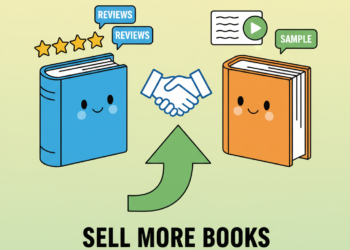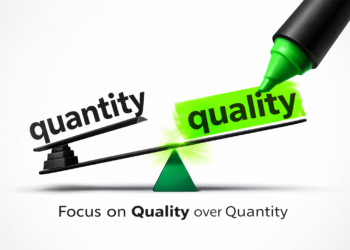In recent years, Sustainable Book Publishing has shifted from a niche idea to a central priority for major publishers worldwide. Readers are becoming increasingly eco-conscious, governments are introducing stricter environmental regulations, and investors are seeking greener partnerships. For publishers, the path to carbon neutrality is no longer optional; it’s a business imperative.
Below, we’ll explore the environmental wake-up call, seven game-changing sustainable practices, and how industry leaders are setting standards for the future.
The Environmental Wake-Up Call
The publishing industry’s environmental impact is staggering. Research shows:
- Carbon footprint: On average, a single paperback generates 1 kg of CO₂.
- Industry impact: In 2023, over 767 million paperbacks were sold in the U.S. alone.
- Waste statistics: Around 640,000 tons of books end up in landfills each year.
These numbers are alarming, but they also highlight an enormous opportunity: publishers can significantly reduce their environmental impact by adopting Sustainable Book Publishing practices.
Seven Game-Changing Sustainable Practices
1. Recycled Paper Revolution
Switching to recycled paper reduces energy consumption by 40% and water usage by 50%. Moreover, using FSC-certified paper ensures forests are responsibly managed.
📌 Case Study: When 200,000 copies of Stillness Speaks were printed on recycled paper, it saved 1,300 trees.
2. Print-on-Demand Transformation
Traditional publishing often leads to overproduction. With print-on-demand (POD), waste can be reduced by up to 50%. POD also cuts transportation emissions and even allows for customization using eco-friendly dry inks.
3. Sustainable Inks and Materials
Petroleum-based inks are harmful to the environment. Many publishers are now turning to soy-based or vegetable-based inks, along with biodegradable packaging, further driving Sustainable Book Publishing forward.
4. Digital Workflows and Reduced Proof Printing
Shifting editorial processes and proofing stages to digital platforms drastically cuts paper waste. Instead of printing multiple rounds of galleys, publishers can rely on secure digital proofs and e-distribution for review copies. This is a small but impactful practice that lowers both costs and carbon emissions.
5. Green Supply Chains and Logistics
Beyond printing, publishers are optimizing distribution networks. Consolidated shipments, eco-friendly packaging, and regional printing facilities reduce transportation-related emissions. Some publishers are even partnering with carbon-neutral logistics providers to ensure greener book delivery.
6. Energy-Efficient Printing Presses
Newer, energy-efficient printing presses use up to 30% less energy than older models. Publishers investing in modern equipment not only improve output quality but also significantly reduce their carbon footprint.
7. Carbon Offsetting and Renewable Energy Investments
Finally, major publishers are adopting carbon offset programs, such as reforestation or renewable energy credits. At the same time, many printing plants and offices are transitioning to solar or wind power, further aligning operations with net-zero goals.
Digital vs. Print: The Real Environmental Story
There’s often debate over whether digital truly beats print in sustainability. Here are the facts:
- E-reader footprint: Producing an e-reader emits 168 kg of CO₂, compared to 7.5 kg for a printed book.
- Break-even point: An e-reader becomes environmentally friendlier after reading 23+ books.
- Water consumption: Manufacturing an e-reader uses about 300 liters of water, versus only 8 liters for a printed book.
This means digital is sustainable in the long run, but publishers must balance print and digital offerings strategically.
Industry Leaders Driving Sustainable Book Publishing Standards
Major publishing houses are paving the way for Sustainable Book Publishing:
- Penguin Random House: Committed to using 100% FSC-certified paper and achieving carbon neutrality by 2030.
- HarperCollins: Achieved carbon neutrality in UK operations as early as 2022.
- Hachette: Introduced an eco-design program focused on full life-cycle analysis of books.
Their actions prove that sustainability is achievable on a global scale.
The Business Case for Sustainable Book Publishing
Embracing eco-friendly practices isn’t just about protecting our planet; it’s also a smart financial decision. One of the most powerful aspects of Sustainable Book Publishing is that it benefits both balance sheets and biodiversity.
Publishers benefit from:
- Cost savings via reduced waste and energy efficiency.
- Brand differentiation in a competitive marketplace.
- Future-proofing against evolving environmental regulations.
- Investor interest, as sustainability becomes a core focus for funding and partnerships.
For more insights on how industry disruption shapes publishing, check out our earlier analysis: Publishing Industry Disruption 2025.
Practical Implementation Guide
For publishers looking to take immediate action, here are simple yet powerful steps:
- Switch to 100% post-consumer recycled paper.
- Partner with FSC-certified suppliers.
- Adopt print-on-demand for titles with unpredictable demand.
- Audit your carbon footprint with an established tool to measure progress.
Small changes implemented today can lead to dramatic long-term impact.
Why Sustainable Book Publishing Matters Now
With readers, authors, and investors all demanding greener practices, the shift toward Sustainable Book Publishing is both urgent and inevitable. Publishers that adopt eco-friendly strategies today will not only lower their environmental footprint but also secure a stronger business position tomorrow.
And let’s not forget: independent authors are already embracing sustainability. In fact, 93% of indie authors are satisfied with their publishing path, often thanks to the flexibility and eco-conscious decisions they can make independently. For traditional publishers, the pressure to innovate is greater than ever.
Final Thoughts
The road to carbon neutrality may be complex, but the destination is worth it. By embracing Sustainable Book Publishing practices, publishers not only protect the planet but also future-proof their businesses in a rapidly evolving industry.
Now is the time for publishers to lead by example and prove that literature and sustainability can go hand in hand.









